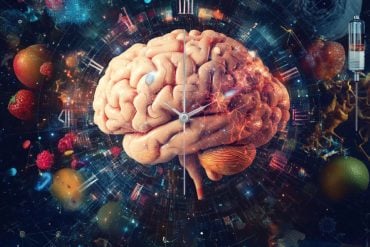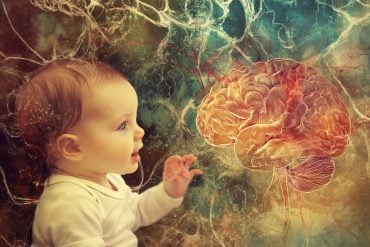Parkinson’s disease researchers discover a way to reprogram the genome.
For decades, the elusive holy grail in Parkinson’s disease research has been finding a way to repair faulty dopamine neurons and put them back into patients, where they will start producing dopamine again. Researchers have used fetal material, which is difficult to obtain and of variable quality. Embryonic stem cells represented a tremendous innovation, but making dopamine neurons from stem cells is a long process with a low yield.
These issues have driven researchers to try to develop ways to turn cells that are easy to obtain, such as skin cells, into dopamine neurons, which are normally hidden in the brain. But here, too, it has been difficult to obtain sufficient quantities of neurons.
Now, Parkinson’s disease researchers at the Jacobs School of Medicine and Biomedical Sciences at the University at Buffalo have developed a way to ramp up the conversion of skin cells into dopamine neurons. They have identified – and found a way to overcome -a key obstacle to such cellular conversions. At the same time, the researchers say the finding has profound implications for changing the way scientists work with all cells.
A cellular ‘gatekeeper’
The new research, published Dec. 7 in Nature Communications, revolves around their discovery that p53, a transcription factor protein, acts as a gatekeeper protein.
“We found that p53 tries to maintain the status quo in a cell, it guards against changes from one cell type to another,” explained Jian Feng, PhD, senior author and professor in the Department of Physiology and Biophysics in the Jacobs School of Medicine and Biomedical Sciences at UB. “We found that p53 acts as a kind of gatekeeper protein to prevent conversion into another type of cell. Once we lowered the expression of p53, then things got interesting: We were able to reprogram the fibroblasts into neurons much more easily.”
The advance has importance to basic cell biology, Feng said. “This is a generic way for us to change cells from one type to another,” he said. “It proves that we can treat the cell as a software system, when we remove the barriers to change. If we can identify transcription factor combinations that control which genes are turned on and off, we can change how the genome is being read. We might be able to play with the system more quickly and we might be able to generate tissues similar to those in the body, even brain tissue.
“People like to think that things proceed in a hierarchical way, that we start from a single cell and develop into an adult with about 40 trillion cells, but our results prove that there is no hierarchy,” he continued. “All our cells have the same source code as our first cell; this code is read differently to generate all types of cells that make up the body.”
Generating new dopamine neurons via cellular conversion
Timing was key to their success. “We found that the point in the cell cycle just before the cell tries to sense its environment to ensure that all is ready for duplicating the genome, is the prime time when the cell is receptive to change,” said Feng.

By lowering the genomic gatekeeper p53 at the right time of cell cycle, they could easily turn the skin cells into dopamine neurons, with transcription factor combinations discovered in previous studies. These manipulations turn on the expression of Tet1, a DNA modification enzyme that changes how the genome is read.
“Our method is faster and much more efficient than previously developed ones,” said Feng. “The best previous method could take two weeks to produce 5 percent dopamine neurons. With ours, we got 60 percent dopamine neurons in ten days.”
The researchers have done multiple experiments to prove that these neurons are functional mid-brain dopaminergic neurons, the type lost in Parkinson’s disease.
The finding enables researchers to generate patient-specific neurons in a dish that could then be transplanted into the brain to repair the faulty neurons. It can also be used to efficiently screen new treatments for Parkinson’s disease.
Houbo Jiang of the Department of Physiology and Biophysics in the Jacobs School of Medicine and Biomedical Sciences and the Veterans Affairs Western New York Healthcare System is first author. Other UB coauthors are Zihua Hu of the Center for Computational Research in UB’s New York State Center of Excellence in Bioinformatics and Life Sciences, Zhimin Xu, Ping Zhong, Yong Ren and Zhen Yan, all of the Jacobs School of Medicine and Biomedical Sciences. UB co-author Haley A. Schilling, now a graduate student in the UB School of Pharmacy and Pharmaceutical Sciences, did the work as an undergraduate. Other co-authors are Gaoyang Liang and Yi Zhang of Harvard Medical School, Xiaomin Wang of Capital Medical University, Beijing and Shengdi Chen of Ruijin Hospital, Shanghai.
Funding: The work was funded by the U.S. Department of Veterans Affairs, NYSTEM, the National Institutes of Health, SUNY REACH, and the National Key Basic Research Program of China.
Source: Ellen Goldbaum – University at Buffalo
Image Credit: The image is credited to Jian Feng, University at Buffalo.
Original Research: Full open access research for “Cell cycle and p53 gate the direct conversion of human fibroblasts to dopaminergic neurons” by Houbo Jiang, Zhimin Xu, Ping Zhong, Yong Ren, Gaoyang Liang, Haley A. Schilling, Zihua Hu, Yi Zhang, Xiaomin Wang, Shengdi Chen, Zhen Yan and Jian Feng in Nature Communications. Published online Decenber 7 2015 doi:10.1038/ncomms10100
Abstract
Cell cycle and p53 gate the direct conversion of human fibroblasts to dopaminergic neurons
The direct conversion of fibroblasts to induced dopaminergic (iDA) neurons and other cell types demonstrates the plasticity of cell fate. The low efficiency of these relatively fast conversions suggests that kinetic barriers exist to safeguard cell-type identity. Here we show that suppression of p53, in conjunction with cell cycle arrest at G1 and appropriate extracellular environment, markedly increase the efficiency in the transdifferentiation of human fibroblasts to iDA neurons by Ascl1, Nurr1, Lmx1a and miR124. The conversion is dependent on Tet1, as G1 arrest, p53 knockdown or expression of the reprogramming factors induces Tet1 synergistically. Tet1 knockdown abolishes the transdifferentiation while its overexpression enhances the conversion. The iDA neurons express markers for midbrain DA neurons and have active dopaminergic transmission. Our results suggest that overcoming these kinetic barriers may enable highly efficient epigenetic reprogramming in general and will generate patient-specific midbrain DA neurons for Parkinson’s disease research and therapy.
“Cell cycle and p53 gate the direct conversion of human fibroblasts to dopaminergic neurons” by Houbo Jiang, Zhimin Xu, Ping Zhong, Yong Ren, Gaoyang Liang, Haley A. Schilling, Zihua Hu, Yi Zhang, Xiaomin Wang, Shengdi Chen, Zhen Yan and Jian Feng in Nature Communications. Published online Decenber 7 2015 doi:10.1038/ncomms10100






